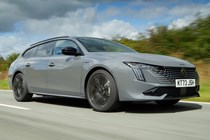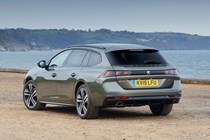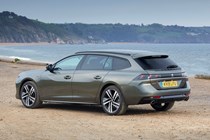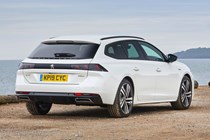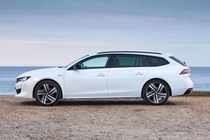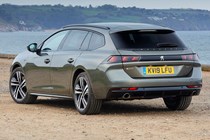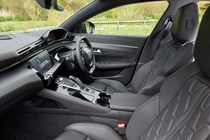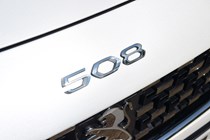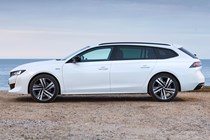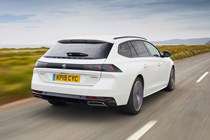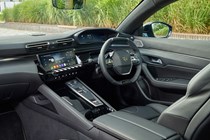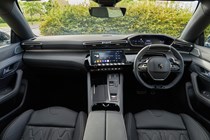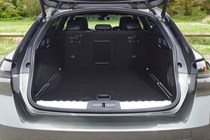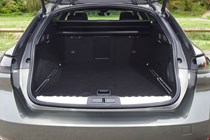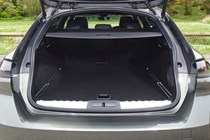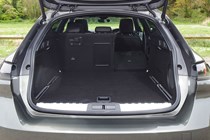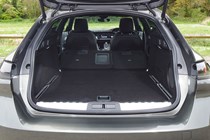
Peugeot 508 SW engines, drive and performance
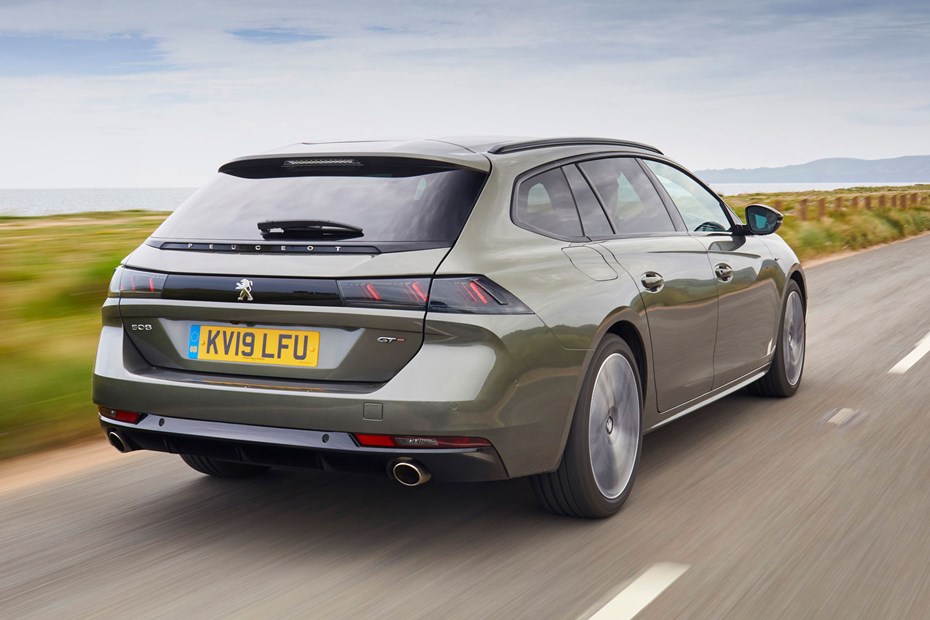
- One petrol and one plug-in hybrid available
- Automatic gearboxes for all of them
- Strong performance from the hybrid
Petrol engine
These days, there’sa single petrol enigne offered in the 508 – the 1.2-litre three-cylinder turbocharged Puretech 130 that comes exclusively with an eight-speed automatic transmission. It’s shared with all manner of Stellantis Group products, including the DS 3, Vauxhall Grandland and Citroen C5 X among many, many others.
Although 1.2 litres seems on the small side for a full-sized estate, it’s more than capable of doing the job. Sure, it won’t blow you away with rapid performance, but it’s a great all-round fit in the 508 and mixes adequate performance with acceptable refinement, which is more a priority in an estate car than outright speed.
You used to be able to specify the 1.6-litre PureTech 225, with 225hp and 300Nm of torque, but that’s now gone, having been replaced by the plug-in hybrid model, detailed below.
Hybrid engine
The plug-in hybrid (PHEV) 508 SW is aimed at those looking for a tax-friendly version. Maximum power combined is 225hp, although in petrol-only mode only it will still deliver 180hp, while the same figure for battery mode is 110hp.
As well as being tax- and (potentially) fuel-friendly, it’s quick too. In Sport driving mode, the 0-62mph time is 5.9 seconds and it’s good for a maximum speed of 155mph. In Electric mode, it will behave like a 110hp EV, and in Hybrid drives like a standard hybrid car such as a Toyota Prius.
You also get a Comfort mode, but this car is best in Sport. It combines both the petrol engine and electric motors and proves highly useful around town, where the electric motors make the most difference from low speeds. It’s not quite refined enough when working hard, with the droning engine note being a particular disappointment – but dial it back and it’s quiet enough not to offend.
What’s it like to drive?
- Shares similar characteristics with the 508 Fastback
- Which means it’s surprisingly agile for a large car
- Quick steering makes it feel sharper than it is
The 508 SW is a big car, but it doesn’t feel that way on the move. That’s due to a far smaller steering wheel than you’d find in any of its rivals. The steering is quick too, so you find yourself getting around a corner with very little turning of the wheel. This makes the 508 feel more agile than many of its rivals, but there’s little in the way of feedback through the steering wheel and it’s very light in Comfort and Normal modes.
There are drive modes on offer, though we’d suggest Sport is probably best left alone – sit back and enjoy the supportive seats instead, because if you go too quickly around a corner you’ll find their lateral support leaves a little to be desired. In all other aspects, however, on the high-spec cars we tried, the seats impressed with their adjustability and suppleness – more so than in more expensive executive rivals.
Comfort seems to suit the 508’s character far better by softening the control weights, while Normal is the default setting and sits in the middle. Manual simply allows the driver to change gears themselves with the paddleshifters. On the motorway is where it’s at its best, with supple damping, low levels of noise and (in 225hp hybrid form), plenty of 70mph punch.
Overall, this is an estate car that’s pretty capable on a twisty B-road, with low levels of roll and impressive damping for a car with suspension that errs on the firm side. Take it easy and it remains composed and nicely balanced, with good body control for such a large car, and impressive grip. Its main dynamic issue is braking feel, which in the hybrid model, ranges from soggy to snatchy depending on how quickly you need to stop – with not nearly enough consistency.


